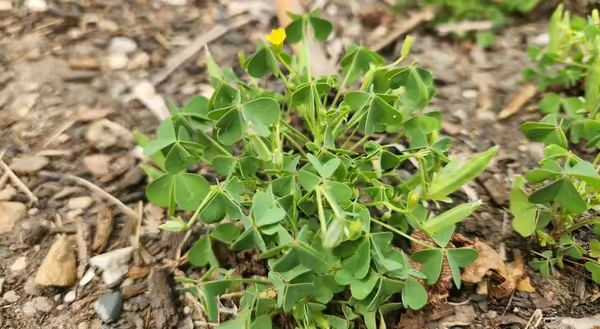
Weeds may be unwanted, but armed with the right information they can be very helpful tools to improving your garden.
There are some weeds that are called indicator species because they are more likely to be found in specific environmental conditions. Their presence in your garden or landscape can provide clues as to specific environmental conditions such as soil compaction, acidic soil, excess moisture, dry soils, low light, and low fertility. While indicator plants can grow in other conditions, their presence might give a clue for investigating soil and environmental conditions.
Step one is knowing both your plants and your weeds
There are two main strategies that can be used to reduce weed infestations. The first is ensuring the right plant is selected for the existing conditions in order to out-compete potential weeds. The second is to amend the soil or conditions to create a less favorable environment for weed growth.
It is essential to identify the weeds in order to accurately control. Once the weed is identified, some research will provide information on its life cycle to help determine the best methods to discourage growth.
Low Fertility
Plants such as the common mullein (Verbascum thapsus), plantain (Plantago spp.), and white clover (Trifolium repens) can be indicators of low fertility. A soil test is an excellent way to verify this observation. Low-fertility soil can be modified by adding organic matter with cover crops, compost, or organic fertilizers such as bone or fish meal.
Another option is to select plants that thrive in low fertility conditions to out-compete the weeds.
Perennials:
- coreopsis (Coreopsis spp.)
- globe thistle (Echinops ritro)
- goldenrod, sweet (Solidago odora)
- ornamental sage (Salvia spp.)
- blanket flower (Gaillardia x grandiflora)
- rattlesnake master (Eryngium yuccifolium)
- yarrow (Achillea spp.)
Shrubs:
- American filbert (Corylus americana)
- fragrant sumac (Rhus aromatica ‘Gro-Low’)
- ninebark (Physocarpus opulifolius)
Wet Soils
Certain weed species indicate excess moisture. Species such as annual bluegrass (Poa annua), common chickweed (Stellaria media), Pennsylvania smartweed (Polygonum pensylvanicum), and yellow nutsedge (Cyperus esculentus) hint at excess moisture in that area.
These areas can be a good spot for a natural rain garden. Rain gardens give water a place to infiltrate the soil, cleaning the water and reducing runoff. Add plants that thrive in these wet conditions.
- blue flag iris (Iris versicolor)
- cardinal flower (Lobelia cardinalis)
- dogwood (Swida spp.)
- joepye weed (Eutrochium purpureum)
- river birch (Betula nigra)
- pussy willow (Salix discolor)
- swamp milkweed (Asclepias incarnata)
- white turtlehead (Chelone glabra)
Soils that dry quickly
Soils prone to drought do not retain as much water as other soils, creating a favorable environment for species such as crabgrass (Digitaria spp.), plantain (Plantago spp.), prostrate knotweed (Polygonum aviculare), and woodsorrel (Oxalis stricta).
Improve soil health using soil-friendly garden practices and add organic matter to help the soil better hold onto water. Control erosion by leaving plants or mulch on the soil. Use soil tests to monitor soil fertility, paying close attention to potassium levels, which can be low in drought-prone soils.
Compacted Soils
Bindweed (Convolvulus arvensis), broadleaf plantain (Plantago major), chicory (Cichorium intybus), dandelion (Taraxacum officinale), and prostrate knotweed (Polygonum aviculare) can be indicators of soil compaction. Reduce compaction by adding organic matter, redirecting foot traffic, or core aerating the soil to make a less favorable environment for these species.
Plants can adapt to a range of conditions. It is important to note that some species can thrive in more than one environment, so using weeds as indicators of conditions is just one way to read the hints the garden is giving. Use the clues to dig deeper to create a less favorable environment for weedy invaders. It is not 100% foolproof, but it is a place to start to reduce weed infestations.